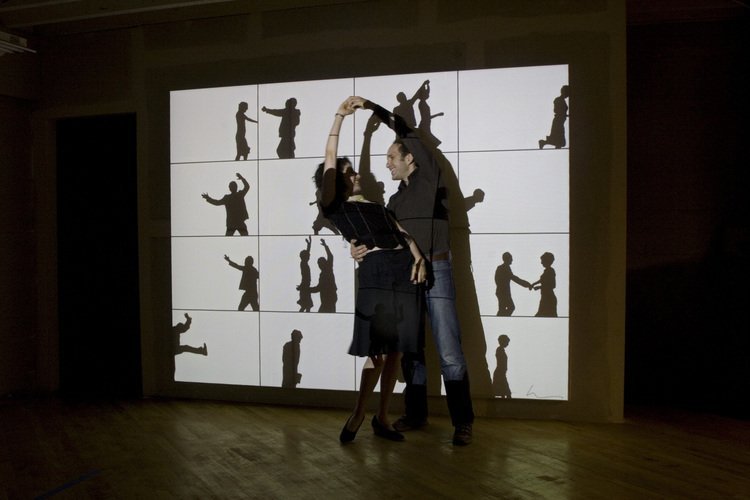Scott Snibbe is a new media artist, author, and host of the How to Train a Happy Mind meditation podcast.
Hidden Geometries
Snibbe’s latest software art series is based on the ancient geometry underlying Tibetan Buddhist thangka paintings. The work includes time-based wall-mounted screens, digital prints, and paintings created with traditional Himalayan mineral pigments.
About Scott Snibbe
Scott Sona Snibbe is a pioneer of interactive art, art that is co-created with its audience. He’s best known for immersive art installations that use projectors and computer vision to respond to human bodies moving in physical space.
Snibbe’s works of new media art span immersive art, installation art, digital art, software art, generative art, sound art, app art, and internet art, and he has collaborated with Björk, Beck, Philip Glass, and other musicians.
His work has been exhibited in museums and galleries worldwide and can be found in the contemporary art collections of New York’s Museum of Modern Art, The Whitney Museum of American Art, and other museums and private collections.
Boundary Functions (1998) is an immersive art installation that shows people’s personal space as they walk over a projected floor.
Deep Walls (2002), captures the movements of people in front of a screen and plays them back in silhouette.
Björk: Biophilia (2011), was the world’s first app album created in collaboration with Björk and other artists and engineers, and the first app acquired for New York MoMA’s permanent art collection.
Gravilux (1998, 2010), an interactive starfield meditation was first an art project then became a number one app in Apple’s iTunes App Store.
Snibbe has been a Tibetan Buddhist practitioner for 25 years and dedicates much of his time to teaching meditation via A Skeptic’s Path to Enlightenment, a nonprofit offering secular Buddhist meditation classes, and the weekly How to Train a Happy Mind podcast. His book on meditation, How to Train a Happy Mind, was published in 2024 and features a foreword by His Holiness the Dalai Lama.
To learn more, watch recent artist’s talks at The Commonwealth Club and UC Santa Barbara; the 2013 Future of Storytelling documentary The Future of Music; Dr. Sanjay Gupta’s 2011 CNN “Next List” profile on Snibbe; his 2012 lecture at the Stanford Human Computer Interface Seminar, Interactivity as a Medium; the 2014 Creator’s Project profile Building an iPad App for Björk, or the 2005 PBS documentary on Snibbe’s early work and studio.







